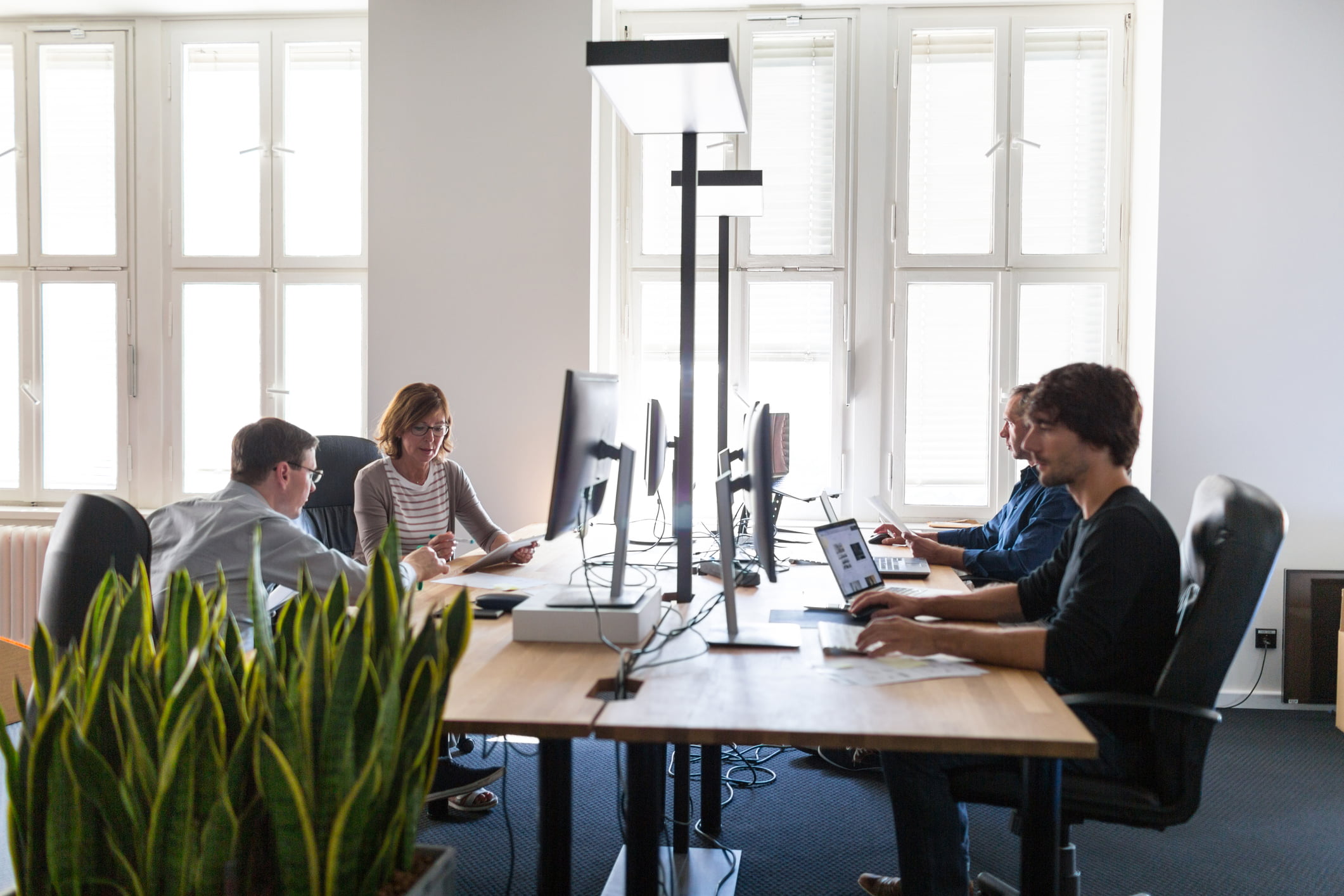Did you know that small businesses are estimated to account for 50% of all UK business-driven emissions?
With energy bills and operational costs remaining high, introducing energy efficiency measures at work could save your business money and improve your sustainability credentials.
Here, we explore the key areas in the workplace that can benefit from low and no-cost energy saving initiatives.
Main ways businesses can save energy
Reduce heat loss
Space heating is usually the biggest energy cost in a workplace, accounting for 49% of energy use in a non-domestic building.
Reducing heat loss and preventing draughts can significantly improve energy efficiency and cut the cost of energy bills. So, it’s a good place to start.
Here are some things you can do to reduce heat loss:
- Identify where draughts are coming from and install draught proofing.
- Make sure unused doors and windows are securely sealed (excluding emergency exits).
- Insulate hot water tanks, boilers and pipes.
- Install heating reflectors behind radiators.
- Keep windows closed when the heating is on.
- Clear any obstructions from radiators.
It’s also important to have boilers, heaters and air conditioning units regularly serviced. This helps to keep costs down in the long term and prevent future repair bills.
Use heating controls
The longer you have your heating on and the higher your set the thermostat, the more expensive your fuel bills will be. By using heating controls effectively, you can avoid wasting energy on unnecessary heating.
Follow these steps to make a difference:
- Create calendar reminders so you remember to update your heating settings with the seasons. Make sure you include daylight savings and consider weekends and bank holidays when setting controls.
- Check that air conditioning is turned off in meeting rooms when people leave. Air conditioning in IT server rooms should be set as recommended by the manufacturer.
- Ensure thermostats are set correctly. Set the heating in offices to 19°C and cooling at 24°C or higher. The temperature in corridors, storerooms and areas of higher physical activity can be set lower than 19°C.
When setting your thermostat, your workplace must meet the minimum workplace temperature for working indoors. The Approved Code of Practice on the Workplace (Health, Safety and Welfare) Regulations suggests this should normally be at least 16°C or 13°C if the work involves a lot of physical effort. There’s no maximum temperature for workplaces.
As an employer, it’s up to you to decide what a reasonable temperature should be in your workplace. You can find more advice on how to protect workers from uncomfortable temperatures.

Install lighting sensors
According to Energy Efficiency for Business, nearly half of business electricity use occurs outside of standard operating hours. Meeting rooms, storage areas and corridors are often lit unnecessarily. Installing lighting controls and sensors in spaces that don’t need continuous lighting is low cost and can be easy to implement.
Also consider installing a timer switch to ensure lighting is switched off outside working hours.
Encouraging simple behaviour changes for staff can also prevent unnecessary lighting costs. For example, encouraging staff to switch off lights before leaving a room.
Replace lighting with LED bulbs
Switch to energy efficient LED bulbs, strip lights or linear fluorescent lamps. This can help lower your electricity bills and carbon dioxide emissions without reducing the quality of light in your workplace.
Let in natural light
Natural light is often overlooked. You can sometimes reduce the need for artificial lighting by changing the layout of your workplace. For example, moving objects that block windows and positioning desks near windows. It will also create a more pleasant working environment.
Some things to consider are:
- Using lighter paint colours or reflective paint on walls.
- Installing vertical window blinds, which let in more light than horizontal ones when open or closed.
- Relocating workstations to well-lit areas.

Check office equipment
Office and work equipment can be high energy users. There are a few things you can do to avoid unnecessary energy use:
- Switch from desktop computers to laptops. Laptops typically use 85% less electricity over a year than desktop PCs.
- Encourage staff to turn off monitors and computers at the plug when they leave and to avoid standby.
- Optimise the brightness of monitors.
- Activate power saving settings on computers and laptops for all staff.
- Set printers to automatically power down when not in use.
- Ensure communal equipment is turned off at the end of the day.
Kitchen equipment can often be overlooked and is an easy place to make savings. Ask yourself:
- Are the seals on refrigerated areas in good condition?
- Do you have an energy-rated fridge/freezer?
- Is the coffee machine energy efficient?
- Have you replaced microwaves/kettles with more energy efficient ones recently?
Maintain production and manufacturing equipment
When it comes to improving energy efficiency in industry, production and manufacturing equipment are vital to operations. However, older and poorly maintained equipment could be costing you. Here are some tips that will help with energy efficiency:
- Switch off motors during breaks and lunch.
- Turn off all machines such as fans, pumps and conveyors at the end of the day.
- Label switches correctly so staff know which operating machinery they can turn off and how to do it correctly.
- Optimise the speed of equipment to save its energy consumption.
- Listen for leaks in compressed air pipes.
- Change air filters regularly.
Make sure refrigeration units are working efficiently
For refrigeration to work efficiently, air needs to circulate both inside and out. Here are some simple measures to ensure your refrigeration units work as efficiently as possible:
- Keep doors closed.
- Switch off lights inside cooled spaces when not needed.
- Don’t overfill refrigeration units.
- Defrost freezers regularly.
- Repair door seals.
- Make sure there’s space around refrigeration unit vents to allow air to be drawn in and expelled.
Looking for support with energy efficiency in the workplace?
With these small but effective tips, your organisation’s workplace should see some energy savings.
If you’re interested in measuring your organisation’s full carbon footprint and developing a plan to reduce emissions, we can help. Discover more about our Measure Plan Act methodology or get in touch to see how we can help you.
Further reading
Tips to help SMEs save energy
Small and medium sized enterprises (SMEs) can face a lot of barriers when it comes to investing in energy efficiency. We explore…
BlogCarbon accounting: a guide for businesses
Find out what carbon accounting is and how you can use it to measure and reduce your business' carbon footprint.
BlogA guide to energy efficiency for employees
With energy bills and operational costs rising, introducing measures to reduce energy use within your business could save you money. Here's a…